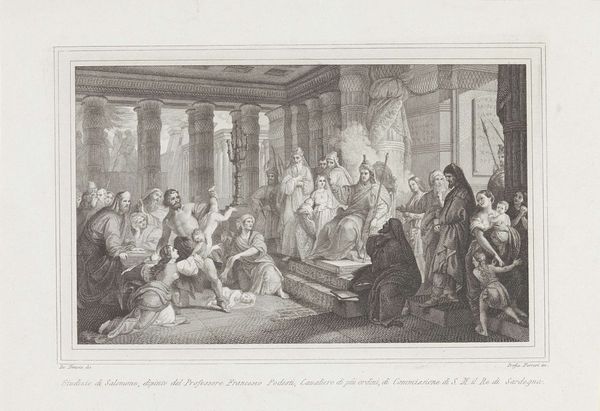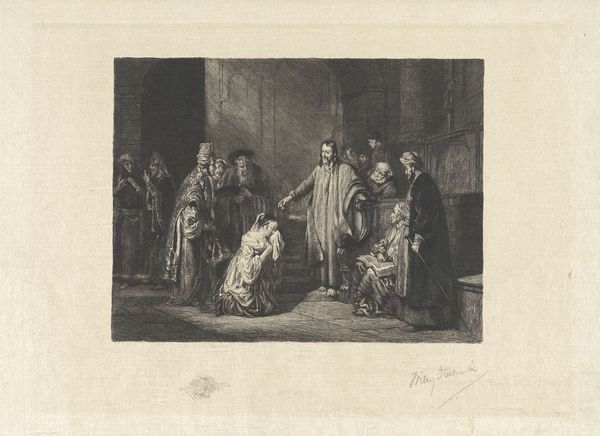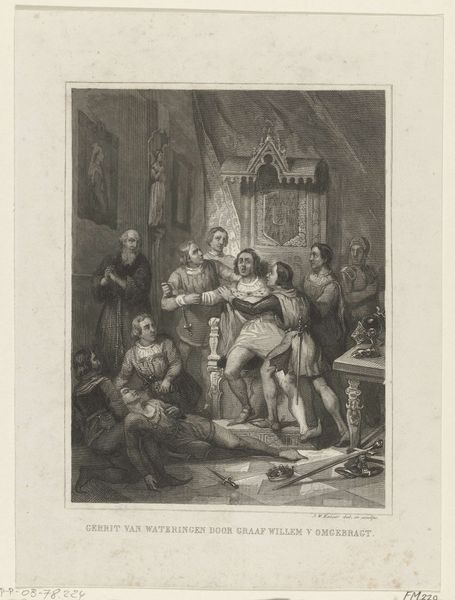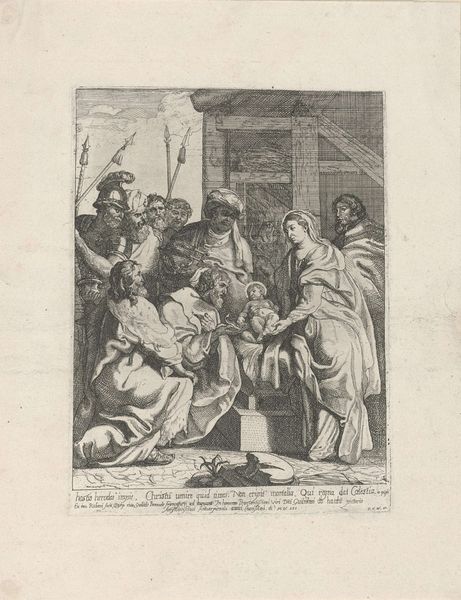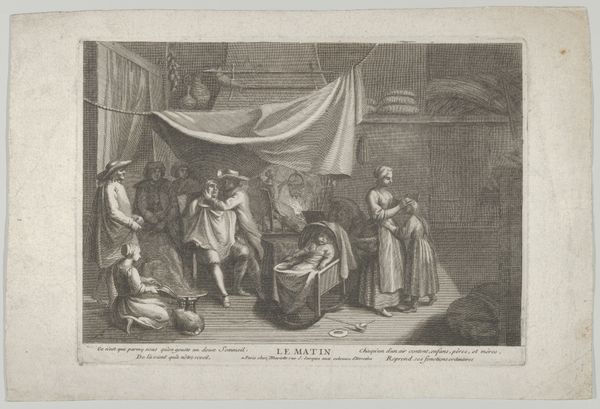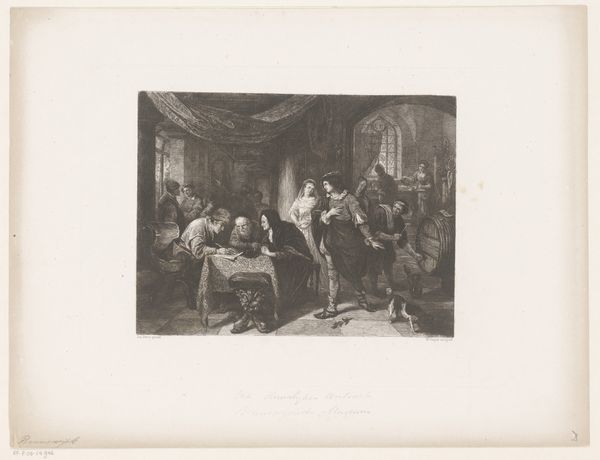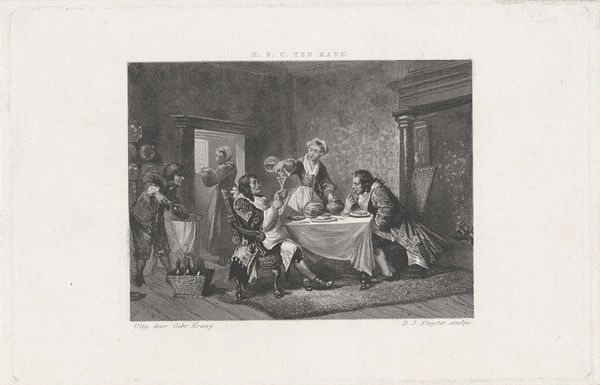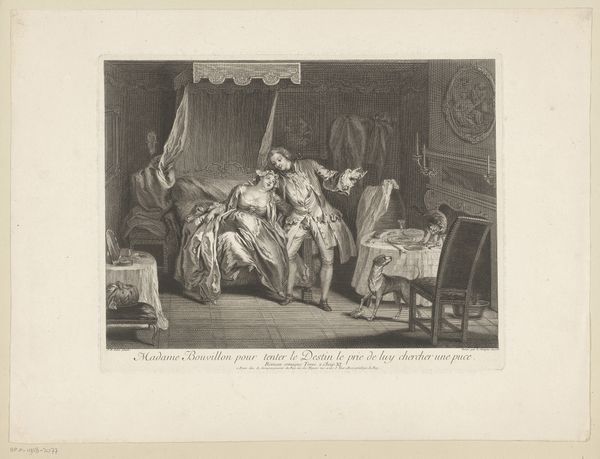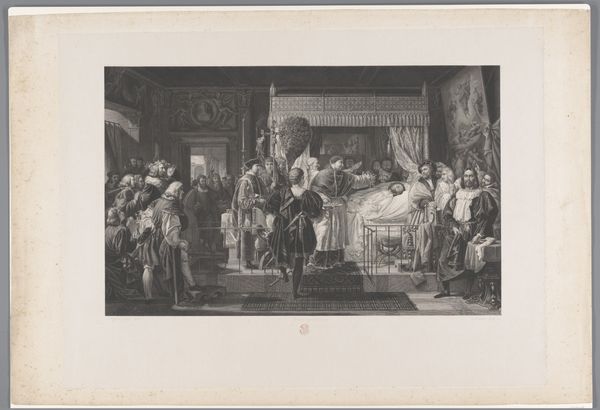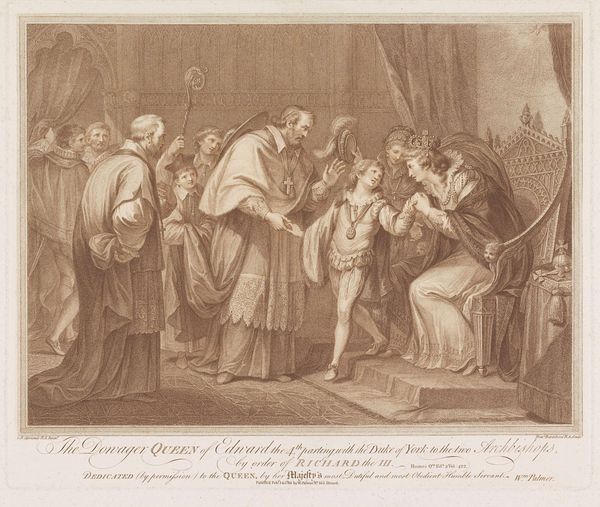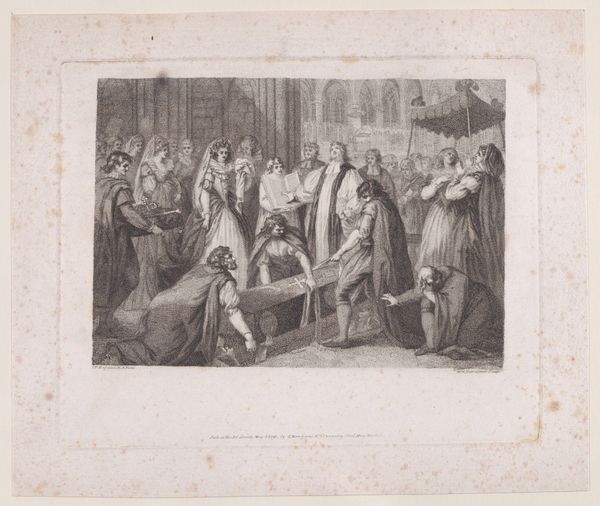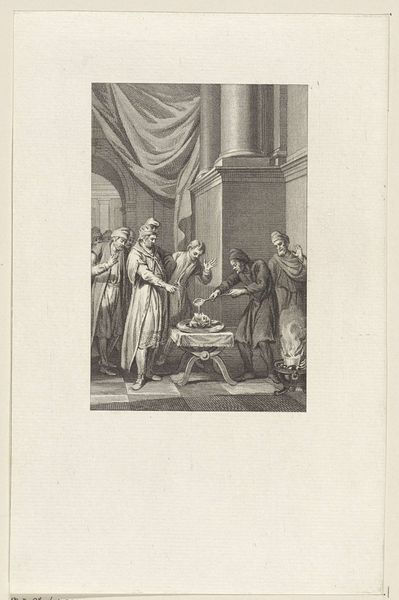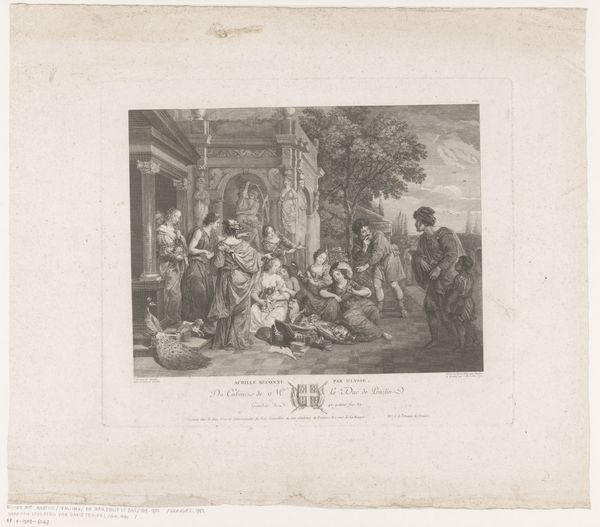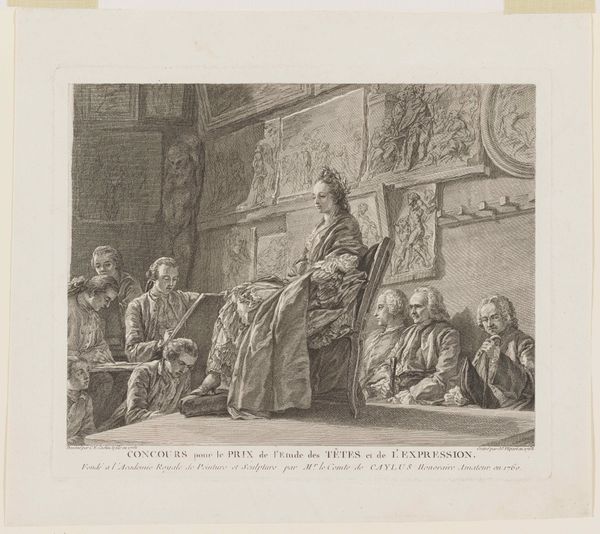
print, engraving
#
narrative-art
#
baroque
# print
#
old engraving style
#
figuration
#
chiaroscuro
#
line
#
history-painting
#
engraving
Dimensions: height 146 mm, width 220 mm
Copyright: Rijks Museum: Open Domain
This print, "Judas Receives Silver for his Betrayal," was made by Bernard Picart around 1734. As an etching, it involves coating a metal plate with wax, drawing through the wax to expose the metal, and then bathing it in acid. This creates the fine lines that define the composition. Look closely, and you will notice how the varying depths of the lines create a sense of light and shadow, a technique Picart used to heighten the drama of the scene. This wasn’t just about aesthetics, though. Printmaking like this was a key industry in the 18th century. It allowed for the mass production of images, and the dissemination of ideas. Picart's print, reproducing a design by Rembrandt, speaks to the commercial value placed on artistic skill. It highlights the labor involved in producing and reproducing images for a growing market. This reminds us that art, even when depicting moral dilemmas like Judas's betrayal, is deeply embedded in the social and economic context of its making. The value of craft is intertwined with the exchange of currency.
Comments
No comments
Be the first to comment and join the conversation on the ultimate creative platform.
